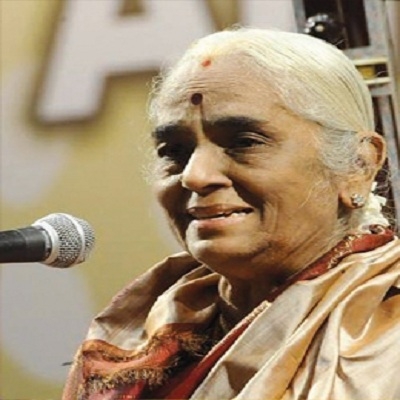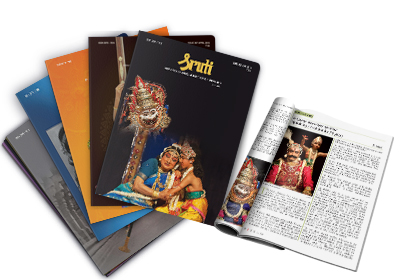
Manodharma singing or creative music is an integral part of our classical music. In Carnatic music this manodharma is seen in the areas of raga alapana, kalpana swara, niraval, tanam and pallavi. One of the most beautiful components of Carnatic music concerts – the tanam, is unique as a musical entity. While the words tana, tenna, and tenaka have occurred in ancient texts on music, they have different connotations, but could have in some form or other contributed to tanam in its present form. My guru Mudicondan Venkatarama Iyer was extolled in music circles for tanam singing and I am proud to have inherited this legacy from him.
Each of the above mentioned areas of manodharma singing have some exclusive features.
In raga alapana
- syllables such as ta da ri na areused
- there is a combination ofspeeds – you may find a flash of ahigher speed in the midst of a slowpaced phrase
- there is no tala framework
In kalpana swara
- the solfa syllables or swara-s of a particular raga are first sung in the lower speed and then in the higher speed
- this has to be based on the tala of
- the kriti chosen
In niraval
- a meaningful line from a kriti is chosen and sung in a creative manner
- the words are important and must be rendered with raga bhava
- niraval is within the tala framework of the chosen kriti
In tanam
- the word ‘ananta’ is repeated many times
- it is in chatusra gati but there is no obvious tala count for this
Origin of the word
The lexicon of Sanskrit describes it as Tanyate vistaraayate iti taanaha – tana is that which is elaborated.
The Sabda Kalpadrumam defines it as Tanyate anena gaanaanga viseshaha. The tanam mentioned in early treatises has a different connotation from the tanam we sing today. The prabandha has six integral parts or anga-s, namely, swara, biruda, pada, tena, pata and tala. The Sangeeta Ratnakara describes the term tena as mangala prakasaka meaning auspicious. Teneti sabdastenaha syaanmangalaarthaprakaasakaha Om tatsaditi nirdesaat tatvamasyaadivaakyataa ‘Tena’ is indicative of an auspicious object. Om tat sat or tat tvamasi refer to the Brahman. Therefore tena refers to prabandha characterised by Brahman which is the essence of auspiciousness. Tanam could have emerged from this auspicious tena. Works like the Natya Sastra and Dattilam speak of 84 tana-s derived from the two grama-s and were called shadava and audava tana-s.
In later texts like the Ratnakara, the tana-s were from suddhamoorchana-s and were called(i) ‘suddha tana’ similar to asampoorna raga with swara-s inkrama like ‘r g m p d n s’ and(ii) ‘kuta tana’ similar to a vakraraga where various permutationsand combinations are used such as‘r m g p d n s’. Krama and kutatana-s are computed logically andthis is called ‘prastara’. Throughprastara we can compute tana-swith many combinations of swara-s.Earlier texts on music mention swara vistaram and swara prastaram,a permutation and combination ofnotes. This could have later evolvedinto tanam. Singing of swara-s invarious patterns and combinationscould have become tanam, replacingthe swara-s with the word ‘anantam’.
Reciting ‘anantam’ again and again could have led to the syllables ‘a nam tam’ which are repeated, and this could have led to the origin of the term ‘tanam’ in music. Subbarama Dikshtar has also referred to tanam as ‘katakam’. In references to music in Tamil literature, there is mention of people singing ‘tenna tenavenru’ – so the term ‘tenna’ was in vogue. This too could have evolved into tanam.
In Hindustani music, the singing of dhrupad commences with a nom tom alap. Meaningless syllables such as ri, da, tom, nom, yali, and li are employed to unfold the raga in slow, medium and fast tempo.
In tanam the syllables ‘a nam tam’ are used but only in the medium tempo. In Hindustani music singing of ‘taan-s’ refers to singing of typical raga phrases. They are fast paced melodic elaborations in vocal or instrumental music. There is a definite rule for tanam singing and this has to be adhered to for the tanam to be effective. The words ‘tanam’ and ‘anantam’ alone should be used and the syllables ‘a nam tam’. The phrases ‘tum’, ‘num’ ‘tom’ and ‘nom’ should not be used. It is important to pronounce the syllables correctly, ‘aganam’ and ‘taganam’ or ‘tu tu’ should not be used while singing tanam.
Just like a yati pattern in poetic expression, the tanam in music refers to expansion and contraction of phrases usually woven around a particular swara. The building up of patterns is an interesting exercise.
Five kinds of yati-s are mentioned in texts.
(1) Sama yati: the phrases or patterns are equal.
(2) Gopuccha yati: from larger patterns, they successively diminish.
(3) Mridanga yati: smaller patterns progress to larger ones and then come back to smaller patterns.
(4) Pipilika or damaru yati: this is the reverse of the mridanga yati pattern.
(5) Srotovaha yati: smaller patterns expand to larger patterns.
Tanam is of particular importance in veena playing. In a veena concert, the tanam is often rendered before playing the kriti and not just in the ragam-tanam-pallavi. Tanam is usually sung in the medium tempo and is referred to as ‘madhyama kalam’ in the Karaikudi school. In a vocal concert, the tanam is usually rendered after a raga alapana and before the pallavi. Rendering a tanam after an elaborate raga alapana can revive the brisk pace of the concert. In a veena concert, the niraval is not very important as the words cannot be differentiated, and there is not much distinction between swara singing and niraval. It is possible that the structure of the tanam was introduced to balance this. Tanam in madhyama kala is played on the veena by strumming the main string and the tala strings based on the stress syllables. This has a very pleasing effect. The same effect is reproduced by the voice with repetition of the syllables ‘a nam tam’ and with stress on particular syllables.
While training to play the veena, students are taught exercises called chitta tanam. A number of fixed tanam phrases are given, by practising which students get trained for later manodharma playing. Many such chitta tanam-s have been written down in books.


